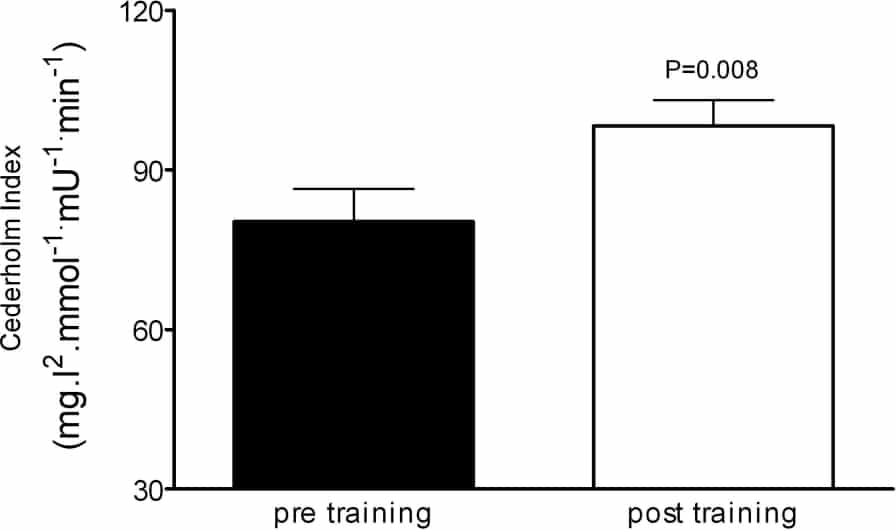Introduction: The prevalence of type 2 diabetes is increasing in western societies resulting in increased healthcare/economic costs. However, the risk of developing T2D is positively modified by regular physical activity. Despite this, there is a lack of consensus on the ideal strategies for ensuring adult participation in exercise. Current recommendations involve performing moderate intensity exercise for several hours per week; however, the general population fails to adhere to such regimes typically stating time as a major barrier. Recently an extremely low volume high-intensity training paradigm (HIT), ~7.5 minutes of exercise per week, has been proposed as a novel, time-efficient exercise regime for inducing aerobic adaptations1. This has challenged our understanding of aerobic adaptation in humans. Aerobic training has been demonstrated to improve insulin action in humans and we sought to establish if HIT can enhance insulin sensitivity in sedentary younger male subjects. Methods: 25 young men (21±5 y) were randomly assigned to control (n=9) or HIT (n=16) groups. Subjects underwent an oral glucose tolerance test (OGTT), a VO2peak test and 2x250kJ cycling time trials. The control group adhered to their normal routine for 2 weeks prior to a second OGTT. HIT comprised of 15 min exercise over 2 weeks, consisting of 4-6 x 30-second cycle-sprints per session. At 48 or 72 hr post training, subjects underwent a second OGTT followed by a third time trial 24h later. Results: Following 2 weeks of HIT, the area under the plasma glucose, insulin and NEFA concentration-time curves were all reduced (12%, 37%, 26% respectively, all P<0.001). Insulin sensitivity (Cederholm index) was markedly improved following 2 weeks of HIT (23%, P<0.001). Fasting plasma NEFA concentration was also reduced (pre: 350 ± 36 v post: 290 ± 39 μmol.l-1, P<0.05) while fasting plasma insulin and glucose concentrations remained unchanged. There were no changes in the control group. Conclusions: These results demonstrate the remarkable efficacy of HIT to improve insulin action in young healthy men. Therefore, there is a need to reappraise the current trends in exercise prescription for increasing energy expenditure, to focus on strategies that are both preventative and more likely to be adhered to by young and middle-aged people.
University of Oxford (2008) Proc Physiol Soc 12, C15 and PC25
Oral Communications: Extremely short duration high intensity training substantially improves insulin action in young healthy males
J. Babraj1, N. Vollaard1, C. Keast1, G. Cottrell1, F. Guppy1, J. A. Timmons1
1. Translational Biomedicine, Heriot Watt University, Edinburgh, United Kingdom.
View other abstracts by:
Figure 1: insulin sensitivity pre and post HIT
Where applicable, experiments conform with Society ethical requirements.

